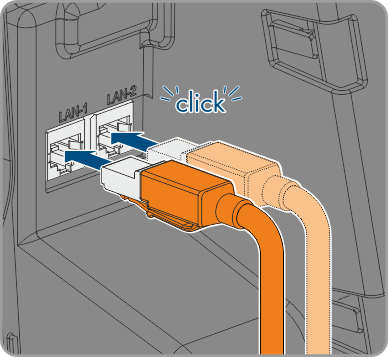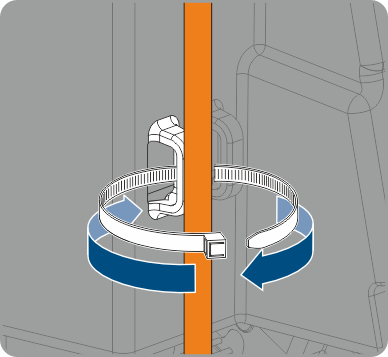Connecting the Network Cables
 Qualified person
Qualified person
 DANGER
DANGER
Danger to life due to electric shock in case of overvoltages and if surge protection is missing
Overvoltages (e.g., in the event of a flash of lightning) can be further conducted into the building and to other connected devices in the same network via the network cables or other data cables if there is no surge protection. Touching live parts and cables results in death or lethal injuries due to electric shock.
- Ensure that all devices in the same network are integrated in the existing overvoltage protection.
- When laying the network cable outdoors, ensure that there is suitable surge protection at the network cable transition from the product outdoors to the network inside the building.
- The Ethernet interface of the product is classified as "TNV-1" and offers protection against overvoltages of up to 1.5 kV.

The two LAN ports (LAN1 and LAN2) enable multiple SMA devices to be connected in series (daisy chain) to the network.
Additionally required material (not included in the scope of delivery):
Network cables( > Network cable requirements)
Where required: Field-assembly RJ45 connector.
Procedure:
- Disconnect the charging station from voltage sources ( > Disconnecting the product from voltage sources).
- When using a self-assembly network cable, assemble the RJ45 connectors and connect them to each network cable (see connector documentation).
- Insert each network cable into one of the network ports.
- Secure each network cable to a strut using a cable tie, and cut off the protruding end of the cable tie with diagonal cutting pliers.
- Ensure that the network cables are securely in place by pulling slightly on them, and that the strain relief is effective.
- If the charging station is installed outdoors, install overvoltage protection for all components in the network.
- If you would like to integrate the charging station into a local network, connect the other end of a network cable to the local network (e.g. via a router).


Also see:
